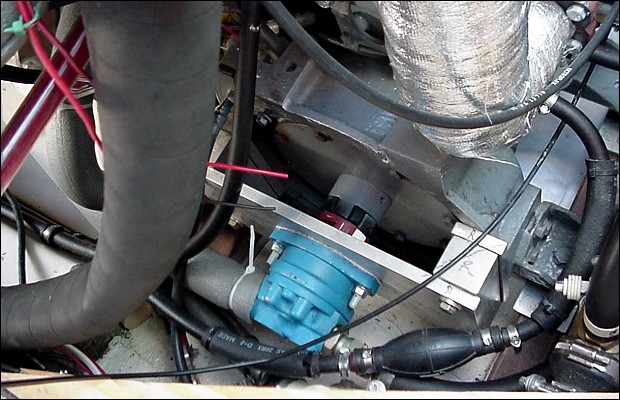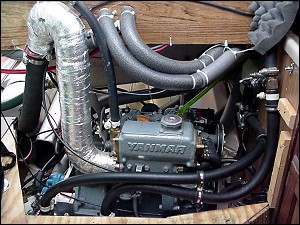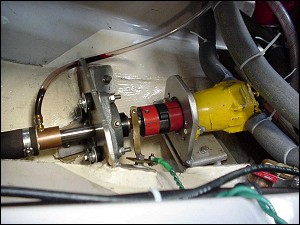I have been fortunate enough to have had the opportunity to build HYDRAULIC DRIVES for two sailboats in the last 10 years and both were quite fun projects. One was an 18 HP system on a small sailboat (Yanmar 2GM for power), and the other was a Yanmar 4JH3 100 HP twin drive system in the N.Y. 40 “ROWDY” which has been winning World Class races ever since (unfortunately, I don’t think it’s related to the repower).

“ROWDY”
www.networkyachtbrokers.co.uk/boats_archive/
(Searching Google, you can find many references to the boats racing activities over the last few years)
The driving force for us going hydraulic was engine placement and adaptability to vessels that were designed for no motor in mind. Both systems worked beautifully and exactly as planned. We kept it very simple as to overall hydraulic design and worked around proven basic designs to keep efficiency loses to a minimum using an open loop system and non-variable displacement, or load sensing, pumps- (we went with large diameter hoses, valves and fittings, pumps and motor and fixed props matched for peak efficiency and used the engine RPM to control flow instead of bypassing fluid when cruising, and had a choice of engine RPM’s at all other speeds. Much more efficient that way. Systems were super smooth, you could ‘shift’ at any RPM, and very quiet. Many people do not realize how much noise can come from a hydraulic system when designed in typical fashions with normally sized matched valves, hoses and lots of 90 degree fitting, and then having 2000-3000+ PSI fluid running thru them.

As to overall efficiency, do not kid yourself. In the best case scenarios, working with closed loop systems operating at peak efficiencies and pressures, you may see 80-82% at best, but 50-70% overall would be the norm. So if you go hydraulics, don’t do it because you think you are going to have a more efficient way as to transmitting power from an engine to the prop, you won’t. Do it for other reasons. A properly installed conventional engine & transmission, and a PROP (as large a practical and a shallow shaft angle in relation to the vessel’s LWL) matched to the engine and BOAT will be heads above as to overall efficiency for moving your vessel 100’s of miles (cruising) under power. BTW, it’s very easy, if you plan, to have a smaller & more efficient load sensing or fixed displacement pump driven off the engine used to drive auxiliary needs such as a dive compressor or generator for various electrical needs if hydraulics needs to be part of the power scheme.

Hydraulic hoses were large diameter and were plumbed to use a minimum of hard 90’s – All smooth bends to keep pressure drop to a minimum & fluid velocity down which all adds up to less noise and added efficiency.
An interesting side note on the Rowdy. Going in, we always assume about a 40+% loss with a relatively low pressure hyd system (2500 PSI max WP – 20 HP in = 13 HP out), but it showed to be much less when looking at the prop we could swing and the performance of the vessel. Many advantages and many disadvantages but, in some cases, it is a good or “best” alternative, as it was in both of these vessels. Without extensive “hands-on” background in power train design and hydraulic work, stay away, as it is vastly more complex that it looks.
Tony Athens / Seaboard Marine
P.S. I forgot to add one bit of info for the “dreamers” out there. Although I said that the efficiency losses in these two hydraulic drive systems seemed to be less than expected and worked great, don’t forget that these drives are being used for auxiliary purposes (maneuvering and /or relatively short term durations) and NOT for cruising 24/7. Even if they were only 25-40% less efficient than a normal gear/drive train set-up, that is a HUGE number when talking about traveling for days on end.







